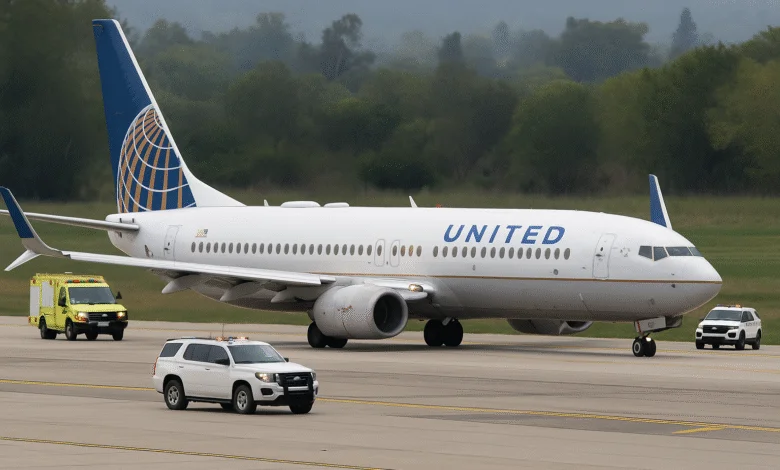United Airlines Flight UA770 Emergency Diversion: Full Story
Air travel is usually smooth, but sometimes unexpected events require immediate action. One such case was the United Airlines Flight UA770 emergency diversion. This incident caught attention because it highlighted the importance of safety, quick decision-making, and the professionalism of airline crews. In this article, we’ll explore the full details of the diversion, why it happened, how passengers experienced it, and what it teaches us about flying today.
What Happened on United Airlines Flight UA770?
Overview of the Flight
United Airlines Flight UA770 was scheduled as a routine service connecting major U.S. cities. It started normally, with passengers boarding, luggage stowed, and the plane departing on time.
The Emergency Diversion
Midway through the journey, an unexpected in-flight issue occurred. Safety concerns led the crew to make the difficult decision to divert the flight to the nearest airport.
Reasons for the Emergency Diversion
Mechanical or Technical Concerns
In many airline diversions, issues like engine warnings, hydraulic pressure drops, or electrical malfunctions trigger alerts. Although the airline does not always disclose exact details, precautionary diversions are standard when systems indicate potential risks.
Passenger Medical Emergencies
Another common cause of diversions is a medical emergency onboard. If a passenger falls critically ill, the plane may divert to get immediate medical care.
Safety First Policy
Regardless of the reason, United Airlines prioritizes passenger and crew safety over convenience.
How Pilots and Crew Handled the Situation
Pilot Decision-Making
Pilots undergo training to act swiftly in emergencies. On Flight UA770, the captain coordinated with air traffic control to reroute the plane safely.
Cabin Crew Role
The cabin crew kept passengers calm, provided updates, and followed emergency procedures. Their quick thinking made the experience less stressful.
Passenger Experience During the Diversion
Initial Reactions
Passengers were understandably anxious, but many reported that the crew’s clear communication helped them remain calm.
Comfort and Support
Once the plane landed, passengers were provided assistance such as rebooking, refreshments, and in some cases, hotel stays.
Social Media Reactions
Several passengers shared updates online, which quickly spread news of the diversion.
The Landing and Aftermath
Safe Arrival
The diverted landing was smooth, and emergency services were on standby at the airport. No serious injuries were reported.
Airline Response
United Airlines released a statement confirming the diversion and emphasizing their commitment to safety.
Passenger Rebooking
After the diversion, passengers were rebooked onto new flights to continue their journeys.
Why Emergency Diversions Are Important
Prevention of Larger Issues
A diversion can prevent a small issue from becoming catastrophic.
Health and Wellbeing
Medical diversions save lives by getting urgent help for passengers.
Airline Responsibility
Airlines must follow strict aviation guidelines to ensure every decision puts safety first.
How Airlines Prepare for Emergencies
Pilot Training
Pilots train in simulators to practice emergency landings, diversions, and unusual scenarios.
Cabin Crew Training
Crew members are trained in first aid, emergency evacuation, and passenger care.
Coordination With Airports
When a flight diverts, nearby airports are prepared to receive the plane safely.
Passenger Rights in Diversions
Rebooking Policies
Passengers are usually rebooked free of charge.
Compensation Rules
Depending on the situation, airlines may provide meal vouchers or accommodation.
Knowing Your Rights
Travelers are encouraged to read the airline’s Contract of Carriage for clarity on diversion policies.
Emotional Impact of Flight UA770 Diversion
Anxiety and Relief
Passengers felt initial fear but later relief when they landed safely.
Importance of Communication
Timely updates from the crew reduced panic and reassured travelers.
Trust in Airlines
Despite the inconvenience, many passengers expressed gratitude for the crew’s professionalism.
Lessons From United Airlines Flight UA770
Always Expect the Unexpected
Air travel is extremely safe, but diversions remind us that emergencies can happen anytime.
Crew Training Saves Lives
The quick and calm handling of Flight UA770 shows how training is vital in aviation.
Safety Over Schedule
Passengers were delayed, but the airline proved that safety is always the priority.
Frequently Asked Questions About Flight UA770
Q1: Why did Flight UA770 divert?
The diversion was due to a precautionary emergency. While details may vary, safety was the key reason.
Q2: Were passengers safe?
Yes, all passengers and crew landed safely without injury.
Q3: What happens to luggage during diversions?
Checked bags are kept on the plane or transferred to rebooked flights.
Q4: Do passengers get compensation?
Compensation depends on the reason for diversion, but rebooking and support are standard.
Q5: How often do diversions happen?
Diversions are rare, but they occur occasionally for technical or medical reasons.
The Bigger Picture: Airline Safety and Trust
Aviation Safety Standards
United Airlines follows FAA regulations and global aviation safety protocols.
Building Passenger Confidence
By handling emergencies responsibly, airlines maintain passenger trust.
Modern Aircraft Technology
Today’s planes have advanced systems that detect and report issues early, allowing safe diversions.
Conclusion: The Story of United Airlines Flight UA770
The United Airlines Flight UA770 emergency diversion serves as a reminder that in aviation, safety comes above all else. Though unexpected, diversions are a part of keeping passengers protected. Thanks to skilled pilots, trained crew, and effective safety protocols, everyone onboard Flight UA770 reached the ground safely.
The incident highlights not just the challenges of air travel but also the dedication of airlines to prioritize human lives. While inconvenient, such diversions prove one thing clearly—safety is never negotiable in the skies.



